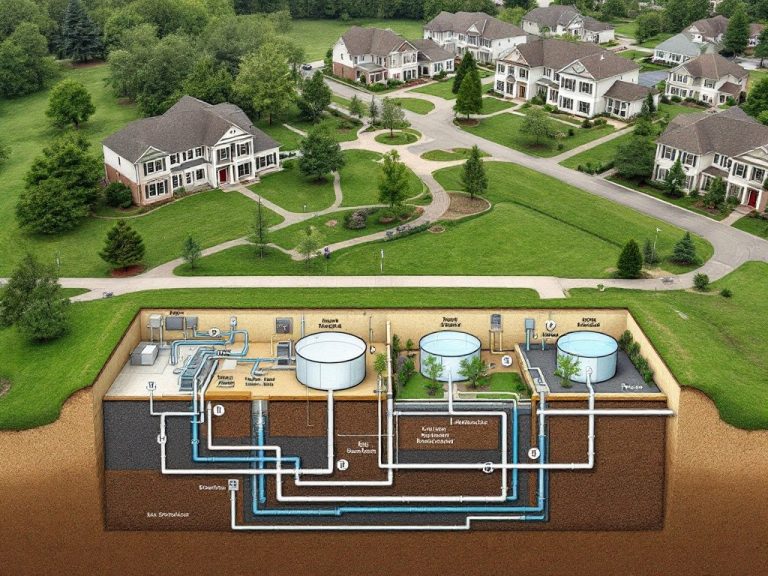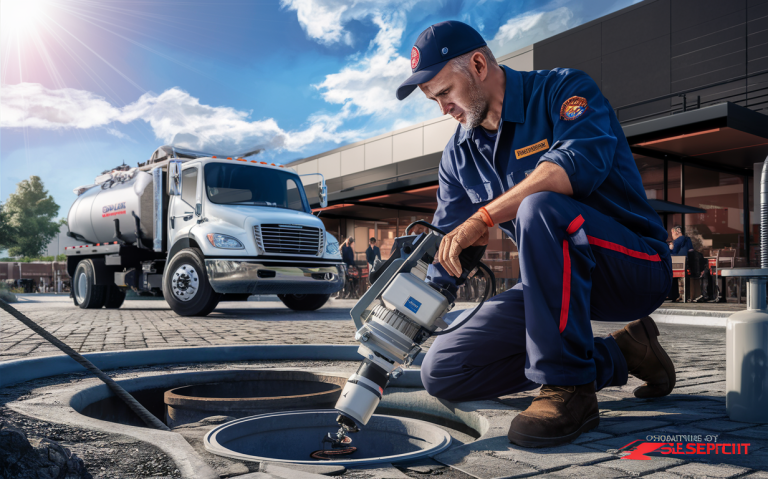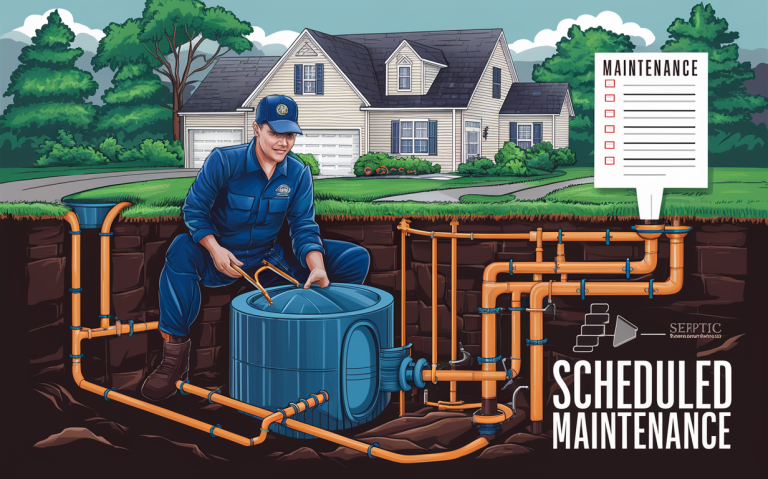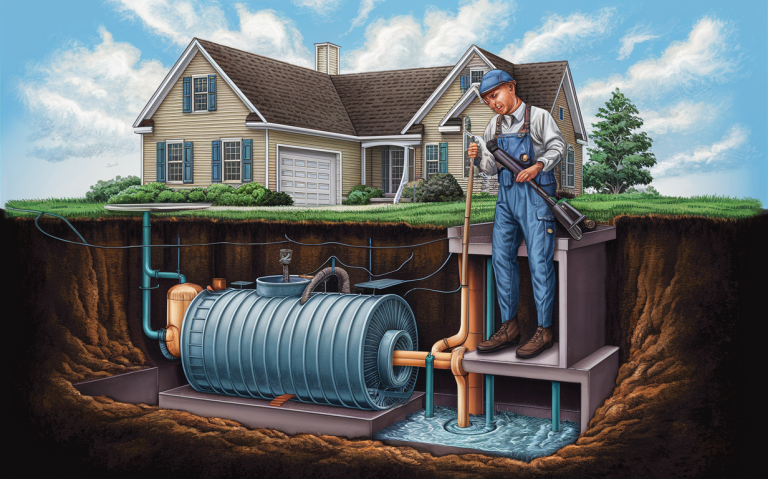Sand Trap Cleaning Services: Protect Your Business
Expert guide covering everything you need to know about sand trap cleaning, grit trap maintenance, and professional services for commercial properties.
Sand trap cleaning services are essential for maintaining the efficiency and safety of commercial properties, particularly those in industries dealing with significant wastewater management. Professional sand trap service ensures these systems function correctly by preventing blockages and environmental contamination.
Key Takeaways
- Sand trap cleaning and maintenance are crucial for preventing system failures
- Grit trap maintenance requires regular professional attention
- Sand trap pumping services help prevent costly repairs and violations
- Professional services ensure compliance with environmental regulations
Understanding Sand Traps and Grit Trap Maintenance

Sand traps and grit traps are essential components in commercial wastewater systems that capture sand, grit, and solid particles before they enter the main sewage system. Common in car washes, restaurants, and industrial facilities, these systems require regular maintenance and professional sand trap service to function effectively..
Professional Sand Trap Pumping Services

Professional sand trap pumping and grit trap pumping services include:
- Regular inspection and maintenance
- High-powered vacuum removal of debris
- Professional cleaning and sanitization
- Proper disposal of collected materials
Understanding the Sand Trap Cleaning Process
The process of cleaning a sand trap involves several steps:
- Inspection: Specialists assess the trap to determine the level of debris and any potential issues.
- Pumping: High-capacity vacuum trucks pump out the accumulated sand and grit.
- Scrubbing and Rinsing: Technicians scrub and rinse the trap to remove any residual material.
- Disposal: The collected waste is transported to a designated disposal site, adhering to environmental regulations.
Benefits of Professional Sand Trap Cleaning
Utilizing professional services offers numerous advantages:
- Expertise: Professionals have the necessary knowledge and experience.
- Efficiency: High-capacity equipment ensures thorough cleaning.
- Safety: Professionals adhere to safety standards, reducing the risk of accidents.
- Compliance: Ensures adherence to local environmental laws and regulations.
Signs Your Sand Trap Needs Cleaning
It’s essential to recognize the signs that indicate it’s time to clean your sand trap:
- Slow Drainage: If water is draining slowly, it might be due to a clogged sand trap.
- Foul Odors: Unpleasant smells can indicate a full or malfunctioning trap.
- Overflow: Visible overflow of wastewater is a clear sign that cleaning is needed.
- Scheduled Maintenance: Regularly scheduled maintenance can prevent unexpected issues.
How Often Should You Clean Your Sand Trap?
The frequency of cleaning depends on several factors:
- Usage: High-usage facilities like car washes may require more frequent cleaning.
- Regulations: Local laws might mandate specific cleaning schedules.
- Inspection Results: Regular inspections can help determine the optimal cleaning frequency.
Choosing the Right Sand Trap Cleaning Service
When selecting a sand trap cleaning service, consider the following:
- Reputation: Look for services with positive reviews and a solid reputation.
- Experience: Companies with extensive experience in your industry are often more reliable.
- Equipment: Ensure the service uses modern, high-capacity equipment.
- Compliance: Confirm that the service complies with local environmental regulations.
Cost of Sand Trap Cleaning Services
The cost can vary based on several factors:
- Size of the Trap: Larger traps may cost more to clean.
- Frequency: Regular maintenance might be less expensive than emergency cleanings.
- Location: Costs can vary based on geographic location and local regulations.
| Factor | Description | Impact on Cost |
|---|---|---|
| Size of the Trap | Larger traps require more time and resources | High |
| Frequency of Service | Regular maintenance vs. emergency cleaning | Medium |
| Geographic Location | Local labor and disposal costs | Medium |
| Type of Facility | Specific needs of different industries | High |
Environmental Impact of Sand Trap Cleaning
Regular cleaning of sand traps has a positive environmental impact by:
- Preventing Pollution: Traps prevent harmful solids from entering natural waterways.
- Minimizing Waste: Proper disposal of collected grit ensures it does not harm the environment.
- Sustainable Practices: Many services practice sustainable methods of waste disposal.
DIY vs. Professional Sand Trap Cleaning
While some businesses might consider DIY cleaning, professional services offer several benefits:
- Thoroughness: Professionals can clean more thoroughly using advanced equipment.
- Safety: Handling waste can be hazardous; professionals follow safety protocols.
- Legal Compliance: Professional services ensure compliance with environmental laws.
Innovations in Sand Trap Cleaning
The industry is evolving with several innovations:
- Advanced Equipment: Modern vacuum trucks and scrubbing tools enhance cleaning efficiency.
- Remote Monitoring: Some services offer remote monitoring to alert when cleaning is needed.
- Eco-Friendly Solutions: Environmentally friendly practices and materials are becoming more common.
Common Misconceptions About Sand Trap Cleaning
There are several myths about sand trap cleaning:
- Only Necessary When Clogged: Regular maintenance is crucial, not just when issues arise.
- Any Cleaning Service Will Do: Specialized knowledge and equipment are essential.
- DIY is Cheaper: Professional services often save money in the long run by preventing major issues.
Best Practices for Sand Trap Maintenance
Follow these best practices for optimal maintenance:
- Regular Inspections: Schedule routine inspections to catch issues early.
- Scheduled Cleaning: Set up a regular cleaning schedule based on usage and regulations.
- Documentation: Keep records of all inspections and cleanings for compliance purposes.
- Choose the Right Service: Work with reputable, experienced professionals.
Frequently Asked Questions About Sand Trap Cleaning
Q: How often should we schedule sand trap cleaning? A: It depends on your facility’s usage and local regulations, but generally, every 3 to 6 months is recommended.
Q: What happens if we neglect sand trap cleaning? A: Neglect can lead to blockages, foul odors, environmental violations, and costly repairs.
Q: Can we clean our sand traps ourselves? A: While possible, professional cleaning ensures thoroughness, safety, and compliance with regulations.
Q: How do we choose the right cleaning service? A: Look for experienced, reputable services with modern equipment and adherence to environmental laws.
Fact about Sand trap cleaning services
- Sand trap cleaning is an essential part of golf course maintenance. It involves removing accumulated sand, debris, and organic matter from the sand traps to maintain their playability and aesthetics.
- Sand trap cleaning services use specialized equipment like vacuum trucks and rakes to remove sand and debris. These machines help ensure that the sand is evenly distributed and the trap’s shape is maintained.
- Regular sand trap cleaning helps prevent waterlogging and standing water in the traps. This not only improves the playing conditions but also reduces the risk of mosquito breeding and other health hazards.
- Sand trap cleaning is a labor-intensive and time-consuming process. It requires a team of skilled workers and can take several hours to complete, depending on the size of the golf course.
- Sand trap cleaning services also involve the use of topdressing materials like sand or soil to restore the consistency and playability of the sand traps. This process helps ensure that the traps provide a consistent challenge to golfers and maintain their intended design.
Key Metrics for Sand Trap Performance
Monitoring key metrics can help maintain optimal performance:
| Metric | Description |
|---|---|
| Flow Rate | Measure how quickly wastewater flows through the trap |
| Solids Accumulation | Track the amount of sand and grit collected over time |
| Inspection Frequency | Schedule regular inspections to monitor condition |
| Cleaning Interval | Record and adjust cleaning schedules based on inspection data |
Conclusion
In summary, regular sand trap cleaning services are vital for maintaining the efficiency and safety of commercial wastewater systems. By choosing professional services like Texway Wastewater Services, businesses can ensure compliance, protect their infrastructure, and avoid costly repairs.
Proper maintenance practices and innovation in cleaning technology further enhance the effectiveness of these services. For more information, you can visit our website or contact us.








 Texway Wastewater Services is a septic, wastewater, and excavation company based out of Burleson, Texas and serving the surrounding areas. We specialize in
Texway Wastewater Services is a septic, wastewater, and excavation company based out of Burleson, Texas and serving the surrounding areas. We specialize in